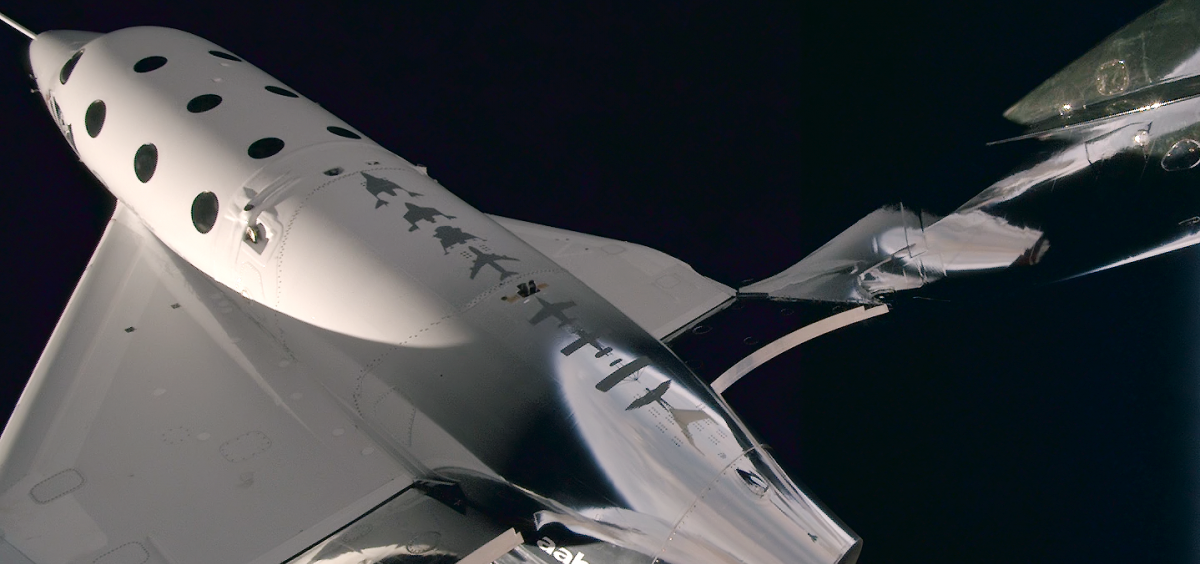News

Virgin Galactic Space Plane Reaches New Heights In Test Flight
By: James Doubek | NPR
Posted on:
Pilots with billionaire Richard Branson’s Virgin Galactic company climbed to 170,800 feet — about 32.3 miles — and reached 2.47 times the speed of sound Thursday in the third successful rocket-powered flight of the company’s newest spacecraft.
The company says the test flight was the first time the plane, named VSS Unity, reached a layer of the atmosphere called the mesosphere, which lies about 31 to 53 miles above the Earth’s surface.
Virgin Galactic, which describes itself as the “world’s first commercial spaceline,” designed the VSS Unity to carry two pilots and six passengers into space to experience a few minutes of weightlessness.
The Unity works by first being carried by the larger VMS Eve aircraft. Both planes reached a height 46,500 feet Thursday before the Unity had a “clean release” and the pilots “lit the spaceship’s rocket motor, before pulling up into a near vertical climb and powering towards the black sky at 2.47 times the speed of sound,” according to The Spaceship Co., a subsidiary of Virgin Galactic.
After reaching its intended height, the company says the Unity glides down and lands without propulsion. It landed safely at a facility in Mojave, Calif., on Thursday.
It was the Unity’s 14th flight overall and third using its own rocket power in four months. According to Space.com, “Since its first test flight on Sept. 8, 2016, the VSS Unity has completed seven ‘captive-carry’ flights — in which it remains attached to the VMS Eve — and seven unpowered glide test flights.”
VSS Unity is the second version of a model called SpaceShipTwo: SS2-02. SpaceShipTwo, version one — SS2-01 — named VSS Enterprise, failed and broke apart during a test flight in October 2014, leaving the co-pilot dead and the other pilot severely injured.
(If you’re wondering what happened to SpaceShipOne, the company says that was only a “proof-of-concept demonstration.”)
The National Transportation Safety Board said in 2015 that the failure was due to human error — that the co-pilot, Michael Alsbury, pulled a lever too early.
The test flight Thursday also gathered measurements inside the cabin during the flight, including temperature, pressure, humidity, radiation, acoustics and more, the company said.
Branson told Bloomberg on Wednesday that about 800 people have already paid $250,000 each for a tourist ticket to space and he hopes to begin offering rides this year — and expects to be on the “first official flight” himself.
“Before the end of the year I hope to be sitting in a Virgin Galactic spaceship, going to space,” Branson said.
9(MDI4ODU1ODA1MDE0ODA3MTMyMDY2MTJiNQ000))

